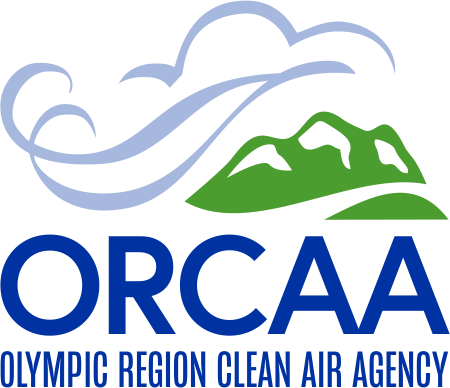Title V of the Federal Clean Air Act
Air Operating Permits (AOPs)
An Air Operating Permit (AOP, also known as a “Title V Permit” or “Part 70 Permit”) combines into one document, all air-related requirements for the operation of a “Major Source” of air pollution (like power plants, oil refineries, and industrial facilities). Major Sources of air pollution are those that emit or have the potential to emit, 100 tons per year or more of any criteria air pollutant [1], 10 tons per year or more of a hazardous air pollutant[2], or 25 tons per year or more of combined hazardous air pollutants. AOPs must be renewed every five years. You can learn more about Air Operating Permits from the EPA.
[1] EPA has established national ambient air quality standards (NAAQS) for six of the most common air pollutants— carbon monoxide, lead, ground-level ozone, particulate matter, nitrogen dioxide, and sulfur dioxide—known as “criteria” air pollutants (or simply “criteria pollutants”)
[2] Hazardous air pollutants (HAPs), also known as toxic air pollutants or air toxics, are those pollutants that are known or suspected to cause cancer or other serious health effects, such as reproductive effects or birth defects, or adverse environmental effects.
Current AOP Sources in ORCAA’s Jurisdiction
AOPs and Technical Support Documents for Major Sources in ORCAA’s region are included below.
Aquatics; Yelm
Product: fiberglass-reinforced bathware products
Air Operating Permit | Technical Support Document
Crown Cork and Seal; Olympia
Product: two-piece aluminum beverage cans
Air Operating Permit | Technical Support Document | AOP Addendum | TSD Addendum
Grays Harbor Energy*
Product: Electrical power
Air Operating Permit | Technical Support Document
Interfor US Inc; Port Angeles
Product: lumber
Initial application received March 2, 2022
McKinley Paper Company; Port Angeles
Product: pulp and paper
Air Operating Permit | Technical Support Document
Paneltech International, LLC; Hoquiam
Product: Specialty coated paper; Amino/phenolic resins
Air Operating Permit | Technical Support Document
* AOP issued by Washington Energy Facility Site Evaluation Council (EFSEC) in consultation with ORCAA
Sierra Pacific Industries – Cogeneration Facility; Aberdeen
Product: electricity (cogeneration)
Air Operating Permit | Technical Support Document
Sierra Pacific Industries – Lumber Mill; Aberdeen
Product: lumber
Air Operating Permit | Technical Support Document
Sierra Pacific Industries; Shelton
Product: lumber
Air Operating Permit | Technical Support Document
Simpson Door; McCleary
Product: wooden door manufacturing
Air Operating Permit | Technical Support Document
Westport LLC; Westport
Product: fiberglass yachts
Air Operating Permit | Technical Support Document
Weyerhaeuser Co.; Raymond
Product: lumber
Air Operating Permit | Technical Support Document
Public input on AOP Permit Issuance
Draft AOPs are subject to a 30-day public comment period and an opportunity for a public hearing. Public notices of draft AOPs and procedures for commenting are provided here.
Appealing a final AOP
there are two ways a final AOP may be appealed:
- Final AOPs issued by ORCAA may be appealed to the Washington Pollution Control Hearings Board (PCHB) within 30 days of receiving the final AOP notice. Please visit the WA PCHB website for procedures.
- Section 505(b)(2) of the federal Clean Air Act and Code of Federal Regulations under 40 CFR 70.8(d) authorize that any person can petition the EPA Administrator to object to an AOP within 60 days after expiration of EPA’s 45-day review period if EPA has not objected on its own initiative. Petitions must be based only on objections to the permit that were raised with reasonable specificity during the public comment period for the draft AOP, unless the petitioner demonstrates it was impracticable to raise these issues during the comment period or the grounds for the issues arose after this period. You can learn more about procedures for Title V Petitions from the EPA.
AOP Initial Application, Renewal, and Modification Forms
- AOP Initial Application – (forms below saved in PDF format)
- AOP Renewal Form – AOP expiration (every 5 years) terminates the source’s right to operate unless a timely and complete renewal application has been submitted consistent with subsection (1) of WAC 173-401-710 and WAC 173-401-500.
- AOP Revision Request Form – Must be approved before a modification takes place.
- AOP Minor Modification Form and Notice of Minor Modification Form – For use with the AOP Revision Request Form for Minor Modifications per WAC 173-401-725(2)(b)(i) and (3)(b)(i).
- AOP Notification of Off-Permit Change Form – This form may be used to notify EPA and ORCAA of any off-permit changes per WAC 173-401-724(1).
- AOP Notification of Changes Not Requiring Permit Revision – This form may be used to notify EPA and ORCAA of any Section 502(b)(10) Changes per WAC 173-401-722(1)(a) and WAC 1730-401-722(2).
AOP Compliance Assistance
Making Submittals to EPA – Details for AOP sources on EPA submittals, and where to send the information.
Identifying Responsible Official for a Corporation – Link to the PDF form needed to identify the Responsible Official for a corporation. Please contact ORCAA if your AOP source is not a corporation.
Reporting AOP Permit Deviations – All deviations from AOP conditions must be reported according to time-frames specified in the AOP using this form.
Reporting Excessive Emissions – All excessive emission deviations from AOP conditions must be reported according to time-frames specified in the AOP using this form.
Semi-Annual Monitoring Reports – A semi-annual report of all monitoring required by the AOP must be reported every six months using this form and instructions.
Annual Compliance Certifications – An Annual Compliance Certification is required using this form and instructions.
Ecology Source Test Method 9A – Visual determination of opacity for a 3-minute standard (7/12/1990)
For assistance, please contact ORCAA’s Engineering Department.

